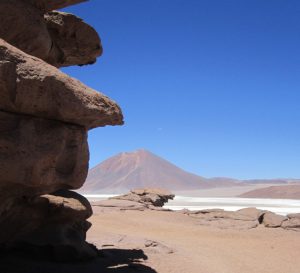
Ignimbrite is a rock name. Ignimbrites form primarily from the collapse of eruption columns during explosive volcanism and are included in the general category of ground-hugging pyroclastic density currents (PDC). Our collective observations of PDCs over the last few centuries shows them forming primarily from explosive vulcanian and plinian eruptions that, on a human scale, have proven to be violent and destructive – witness the eruption of Mt. Vesuvius and burial of Pompeii in 79 AD (Giacomelli et al., 2003; PDF), Mt. Pelée and the destruction of Saint-Pierre in 1902 (Gueugneau et al, 2020; open access), and Pinatubo in 1991 (PDCs, airfall, and lahars).
And yet, as destructive as these recent eruptions were, they are minuscule compared to many ancient examples of thick, extensive ignimbrites that must have formed from supereruptions of cataclysmic proportions – some not so ancient; the Taupo supereruption was a mere 1800 years ago, the Oruanui (Taupo) event 26,500 years ago (Wilson et al, 2006). The shear power and violence of this type of eruption is difficult to comprehend.
The original definition of ignimbrite by P. Marshall (1932, 1935 paper reproduced here), based on a comparison of New Zealand examples with past events in the Valley of Ten Thousand Smokes, incorporated field-based criteria such as thickness, relationship to topography (do the deposits thicken in valleys?), consist primarily of juvenile pumice and ash, and the presence of welding. For many years welding was considered a prerequisite for ignimbrite status.
The decades following Marshall’s inspired investigations saw the term ignimbrite extended to all manner of pyroclastic flows – thick, thin, laterally extensive or of more local distribution, hot or cold including those that are not welded (e.g., the 26.5 thousand year old Oruanui ignimbrite, Taupo, Wilson et al., 2006; PDF). Giordano and Cas (2021) have attempted to rationalize this general terminological conflation with the following definition: an ignimbrite is “…the rock or deposit formed from pumice and ash- through to scoria and ash-rich pyroclastic density currents” regardless of thickness, areal extent, volume, composition, crystal content, relationship with topography, or temperature. This sounds like an anything-goes kind of definition, but Giordano and Cas also develop an ignimbrite classification scheme that distinguishes those formed from single vent eruptions (vulcanian and plinian, like Vesuvius and Pinatubo), from those of much greater magnitude and intensity that form during caldera collapse (issuing from multiple vents/fissures that ring the caldera); their diagram is reproduced below. This categorization is based on measurable quantities such as thickness, areal extent (flow run-out), volume, and aspect ratio. Dispersal area is controlled by the mass flow rate during an eruption and is a proxy for eruption intensity; likewise, flow volume is controlled by flow rate and the duration of the eruption and is a proxy for eruption magnitude.
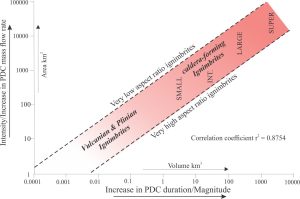
[Aspect ratio is calculated as the average thickness versus the average lateral extent. The concept was introduced to volcanology by George Walker (1983) to distinguish the conditions that create ignimbrites (explosivity, eruption magnitude and intensity)]
[Eruption intensity refers to the rate at which the pyroclastic mass is ejected]
[Eruption magnitude refers to the total mass erupted – the scale of erupted volumes is also encapsulated in the Volcanic Explosivity Index, or VEI]
Common ignimbrite traits
The following list is based primarily on field and petrographic characteristics. In addition to the references cited, I have also drawn on the chapter on ignimbrites by Freundt et al., 2000 (Encyclopedia of Volcanology).
- Deposit thicknesses range from decimetres to 200 m and more. Thickness can be variable even within single flow units.
- Their distribution is largely determined by topography, thickening in topographic lows and thinning over ridges. Their geometry reflects the dominant control of gravity from collapsing eruption columns. Individual flows are capable of blanketing landscapes for 10s of 1000s km2.
- Calculation of the volume erupted needs to account for magma fragmentation, loss of volatiles, and the amount of fine ash dispersed far beyond the observed area of dispersal. It also needs to account for differences in pumice and glassy ash density compared with the equivalent dense, non-fragmented rock (i.e., solid lava). Therefore, erupted volumes are commonly quoted in terms of their dense-rock equivalent (DRE) – i.e., the equivalent volume of non-fragmented lava that in most cases would be rhyolite or dacite.
- Thick ignimbrites commonly appear massive, but on close inspection may reveal several stacked flow or cooling units separated by co-ignimbrite airfall tephra, thin pyroclastic surge deposits, or abrupt changes in grain size or crystal concentrations and composition.
- Grain size grading and stratification may develop in the upper and distal parts of flow units, reflecting waning turbulence in the former, and the transition to laminar fluid flow in the latter.
- Most ignimbrites have rhyolite through dacite compositions. They have an abundance of juvenile pumice, crystals, and pyroclasts of all sizes, although fine ash to coarse lapilli are more common. The term juvenile refers to derivation from the erupted magma.
- Within single flow units, crystal and pyroclast compositions may vary vertically and laterally. Some ignimbrites are crystal-phenocryst rich, others are crystal-poor. Such variations reflect the availability of materials in the magma, particularly as the magma chamber empties. Very large eruptions (supereruptions) may tap more than one magma chamber, and the magma composition in each may vary. This variation is reflected in the compositional zonation within and among closely spaced flow units, although mechanical winnowing of some crystal phases may also take place in the eruption column and ensuing PDC (see Wilson et al, 2021 for an excellent review of magma chamber evolution).
- Phenocrysts are commonly broken by the intensity of the eruption and by mechanical diminution during turbulent pyroclastic flow.
- Country rock derived from vent or fissure walls, or plucked from the substrate beneath a PDC may be added to the volcaniclastic mix.
- Welding is regarded as a syndepositional process. Welding, (also referred to as sintering) of pumice clasts and glass shards occurs when an ignimbrite is hot enough for glass to maintain a relatively fluid or ductile state during deposition. Experimental data on glass rheology indicates that temperatures greater than 800oC are required for this to take place (Lavallee et al. 2015; open access). Welding results in compression and stretching of pumice clasts, producing flame-like structures, or fiamme. Welding of finer ash produces agglutinated glass shards that, at a microscopic scale, appear to flow around phenocrysts and larger pyroclasts. Welding may be sufficiently pervasive to produce crude banding or layering (also called eutaxitic texture) that resembles flow-banding in felsic lava flows. Note that this kind of layering is not the same as that produced by laminar fluid flow in some PDCs.
- Eutaxitic textures, a term usually reserved for welded ignimbrites, refers to the layering produced by the flattening and collapse of pumice fragments, and the agglutination of glass shards during sintering.
- Columnar cooling joints are common in thick ignimbrites.
- Porous, non-welded ignimbrites are susceptible to fumarolic alteration of glass and phenocrysts during cooling.
Ignimbrites in outcrop
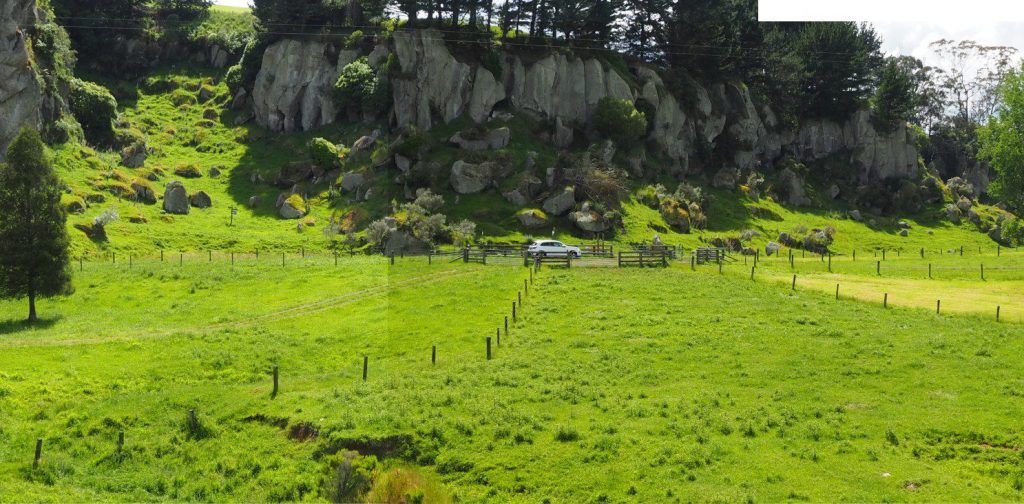
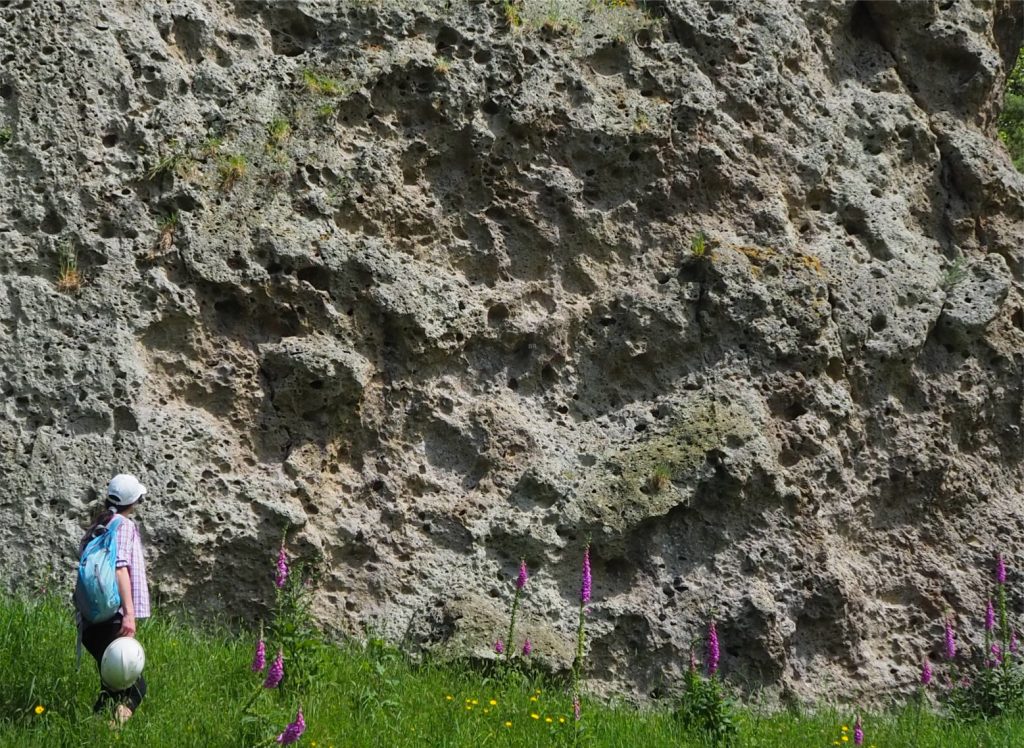
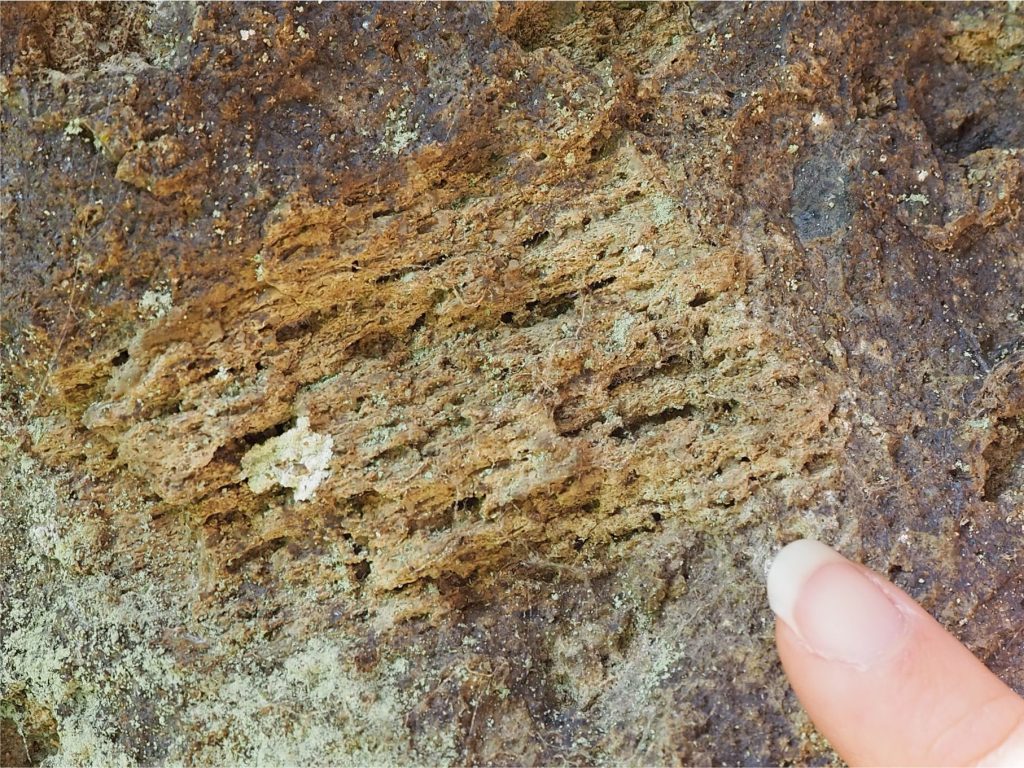
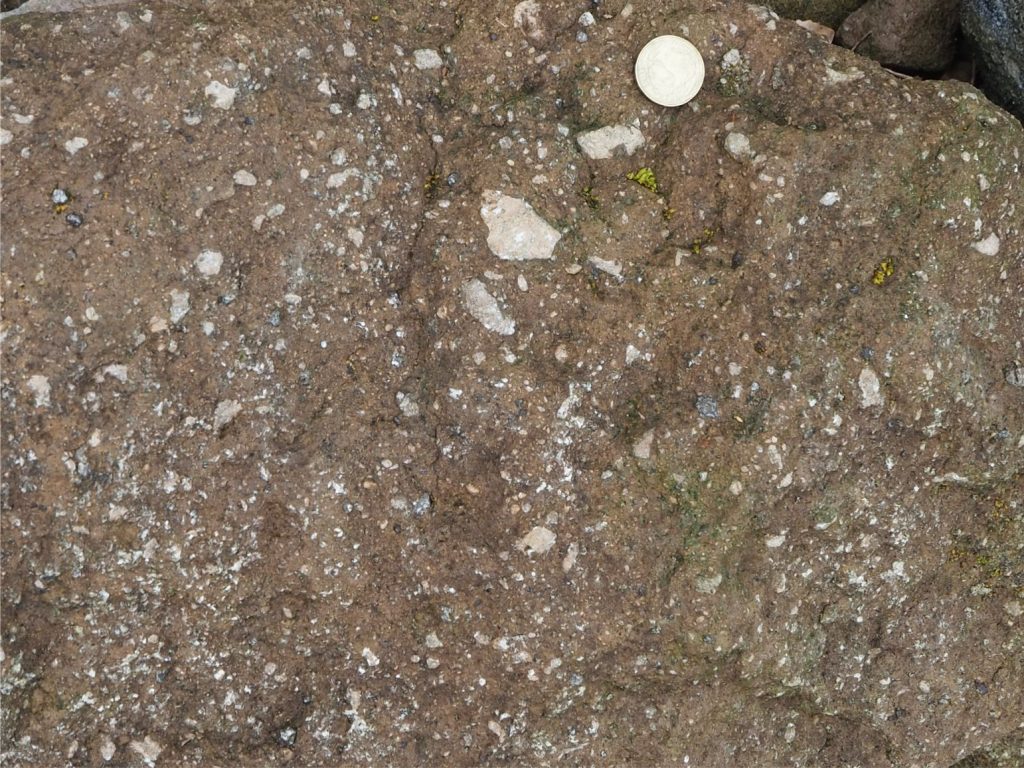
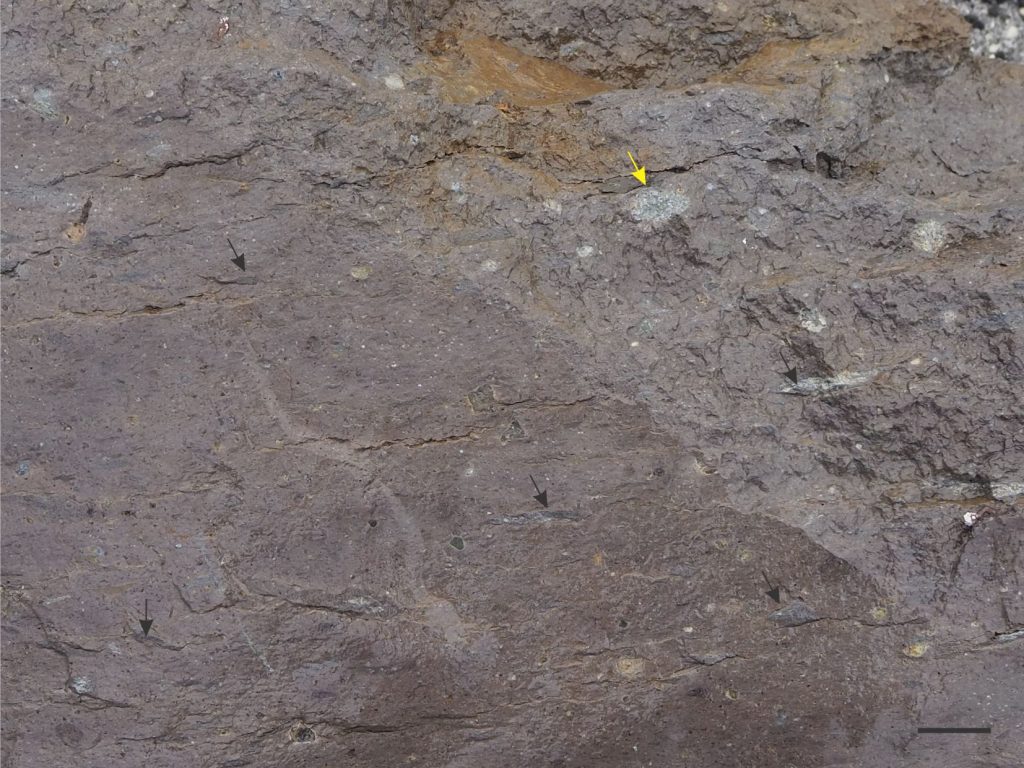
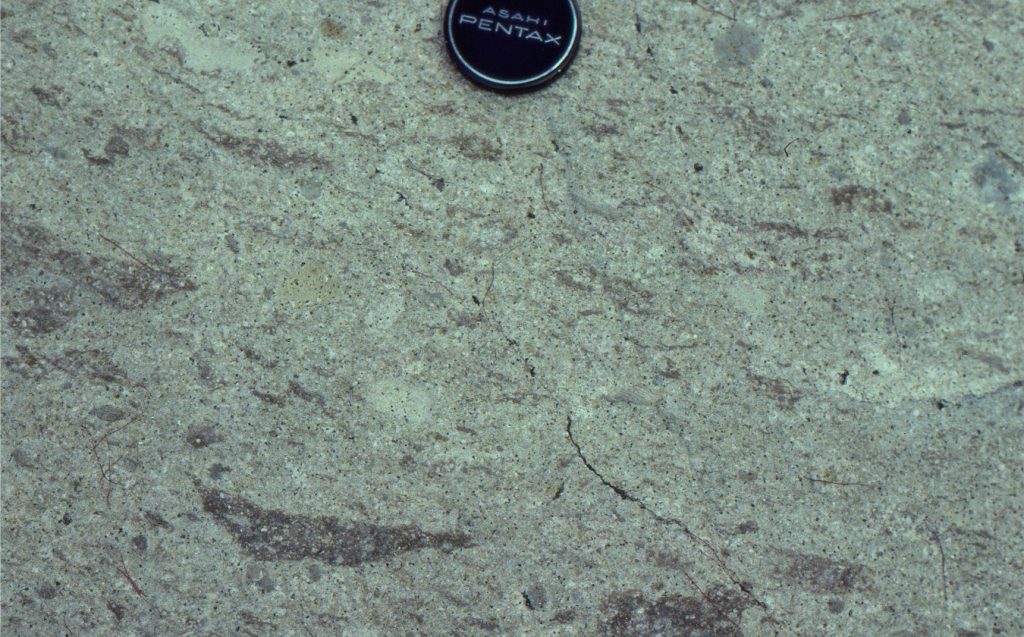
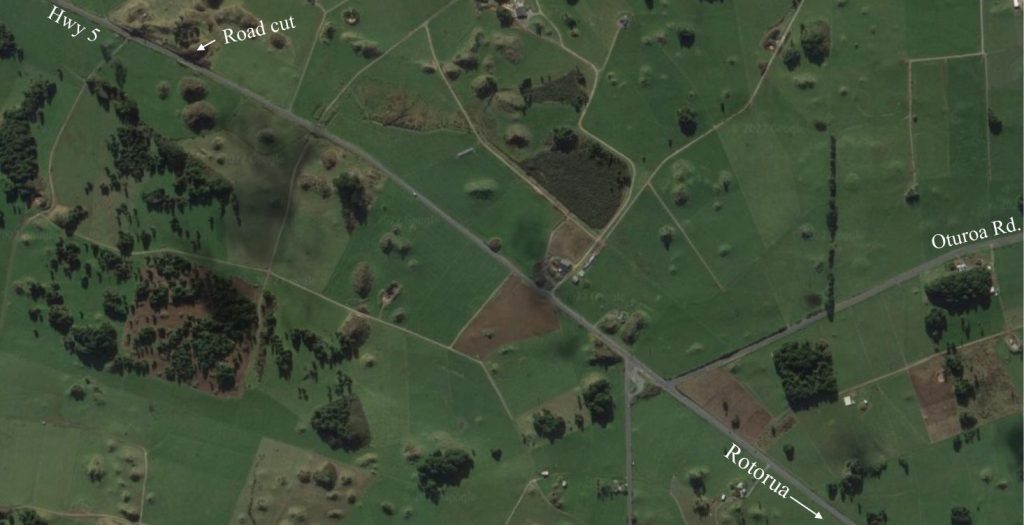
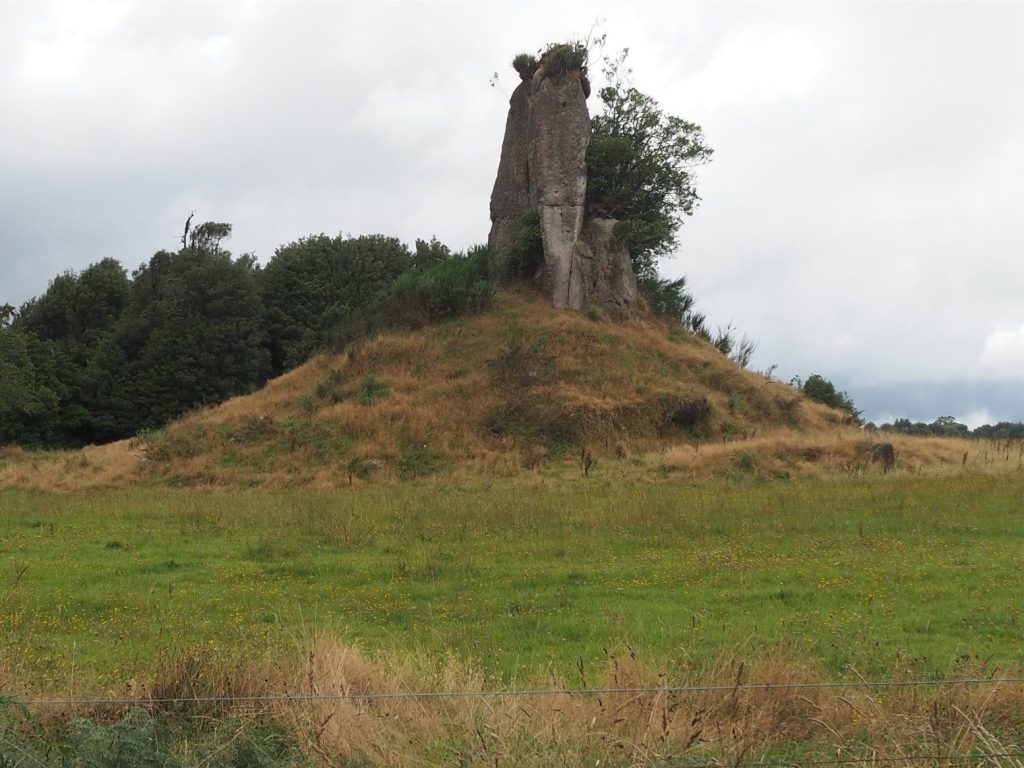
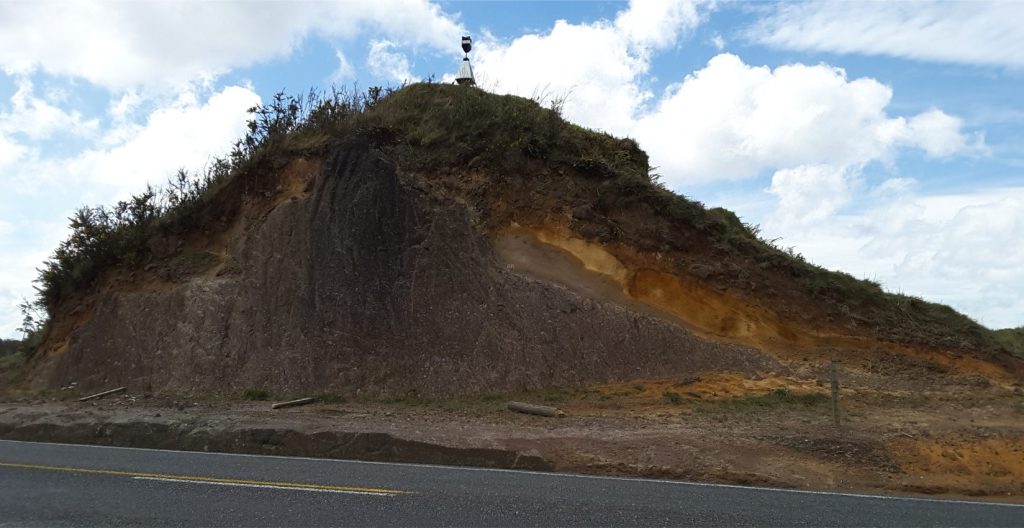
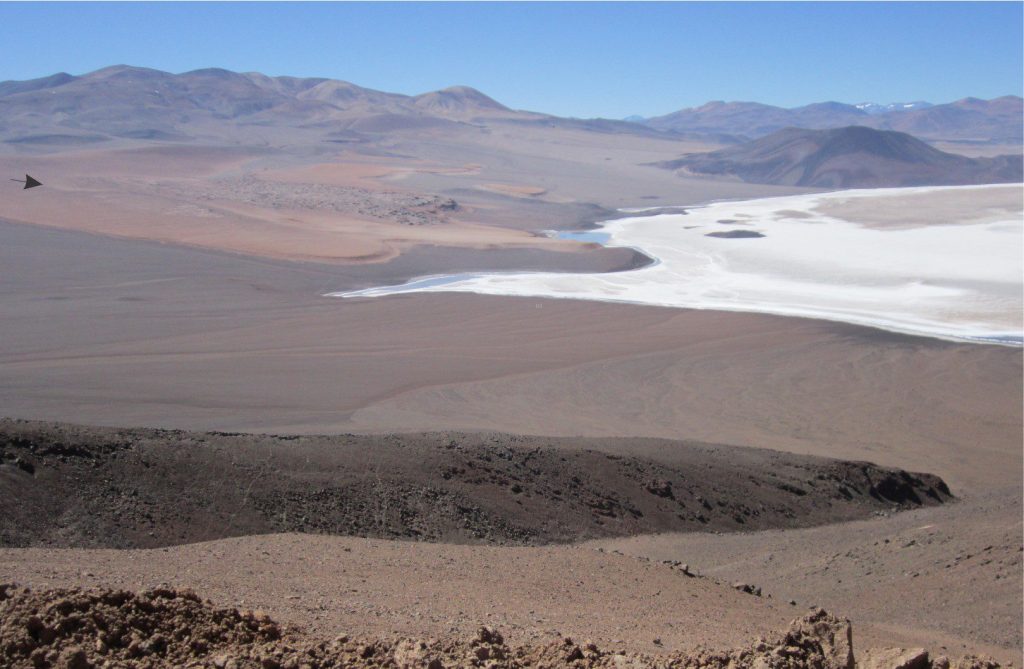
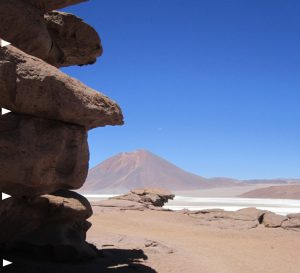
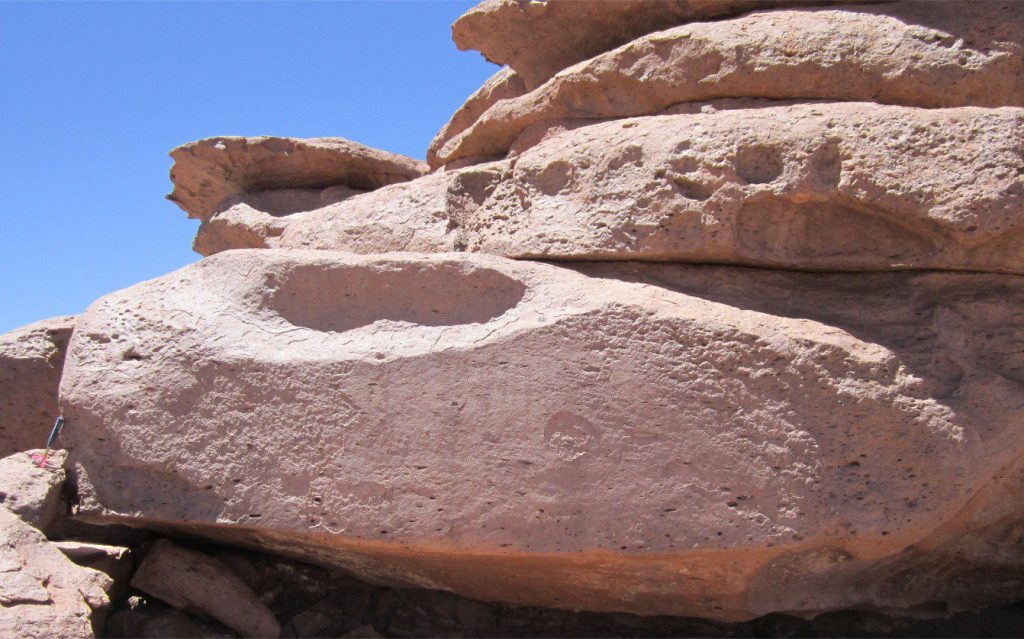
Ignimbrites in thin section
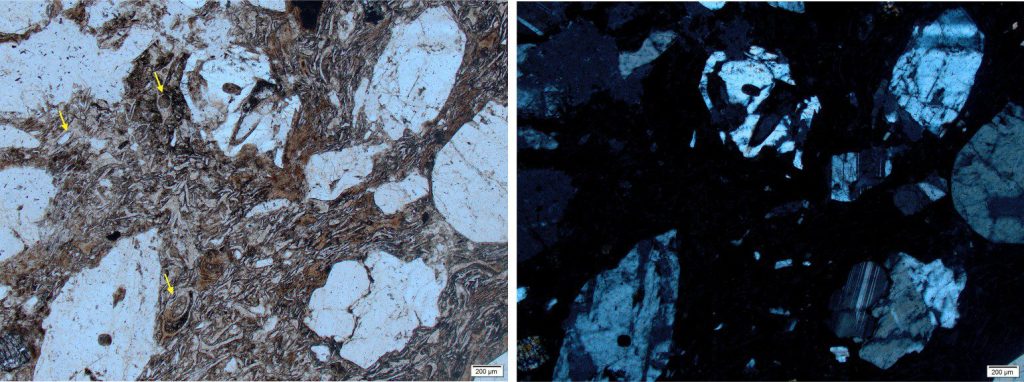
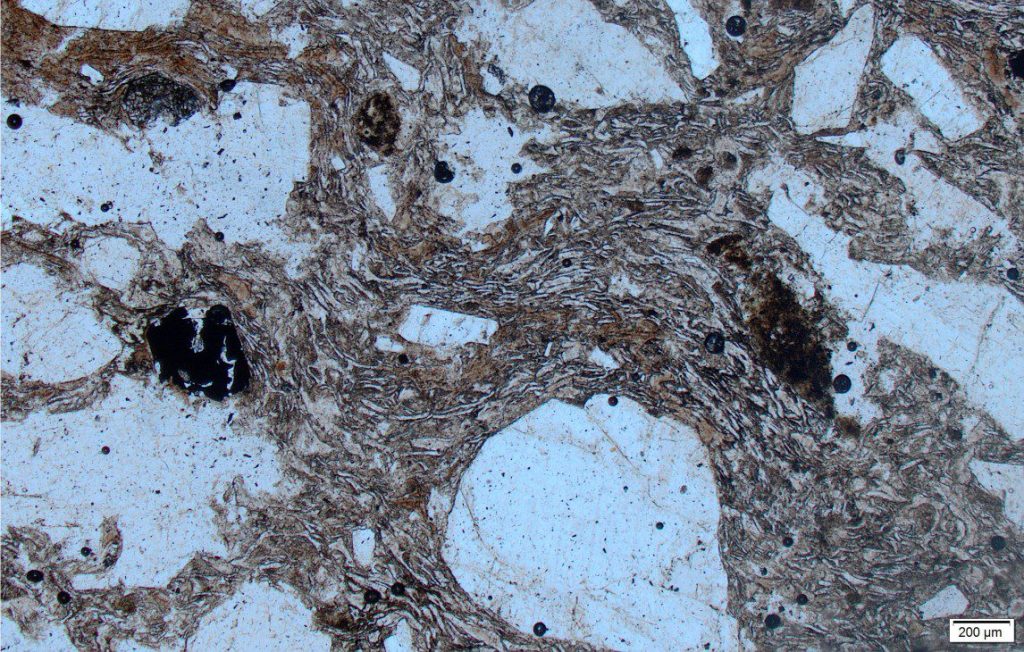
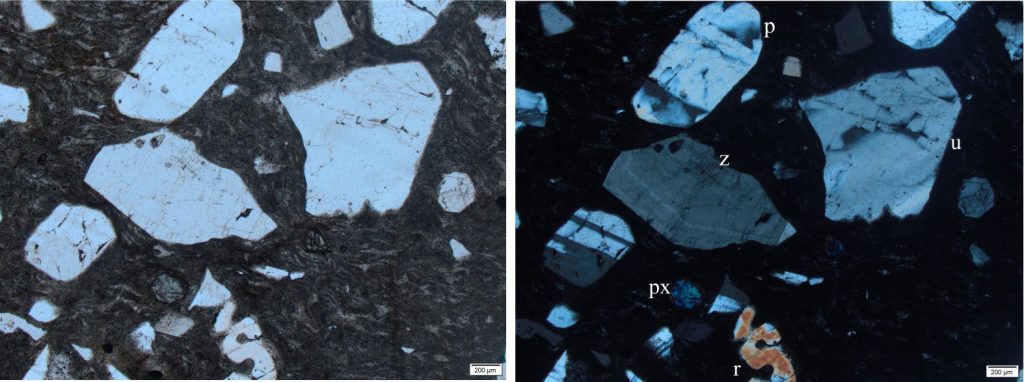
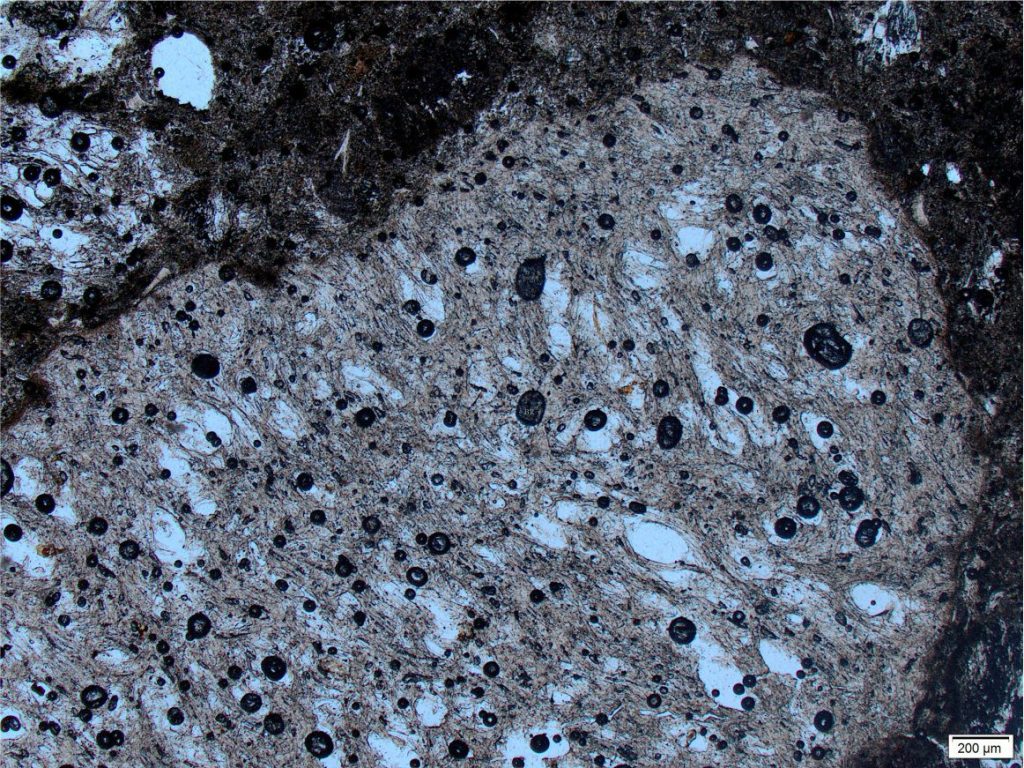
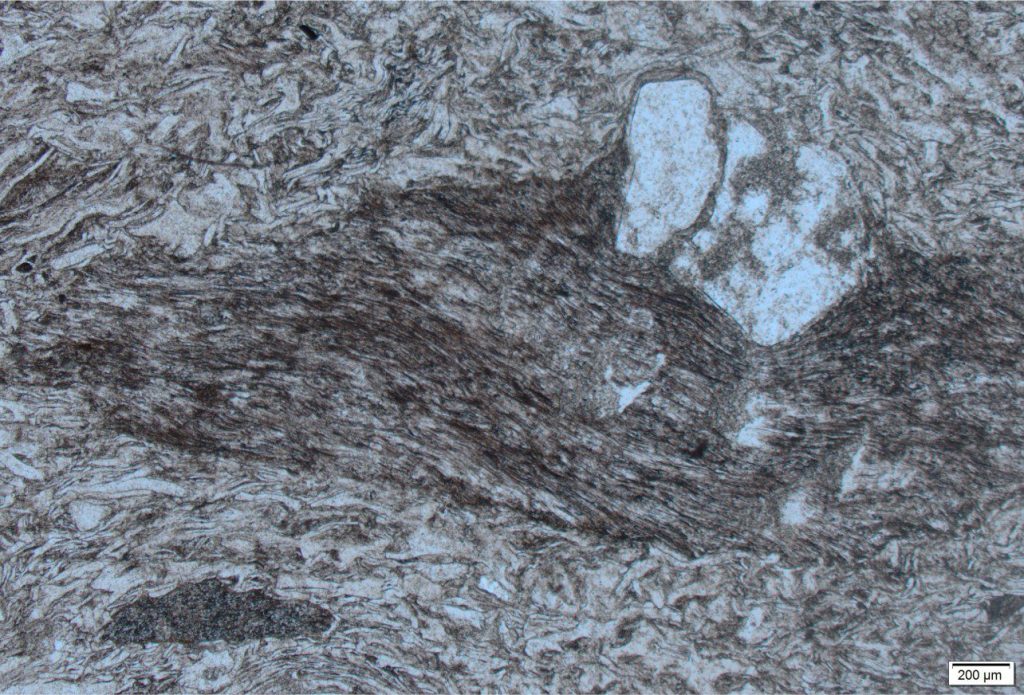
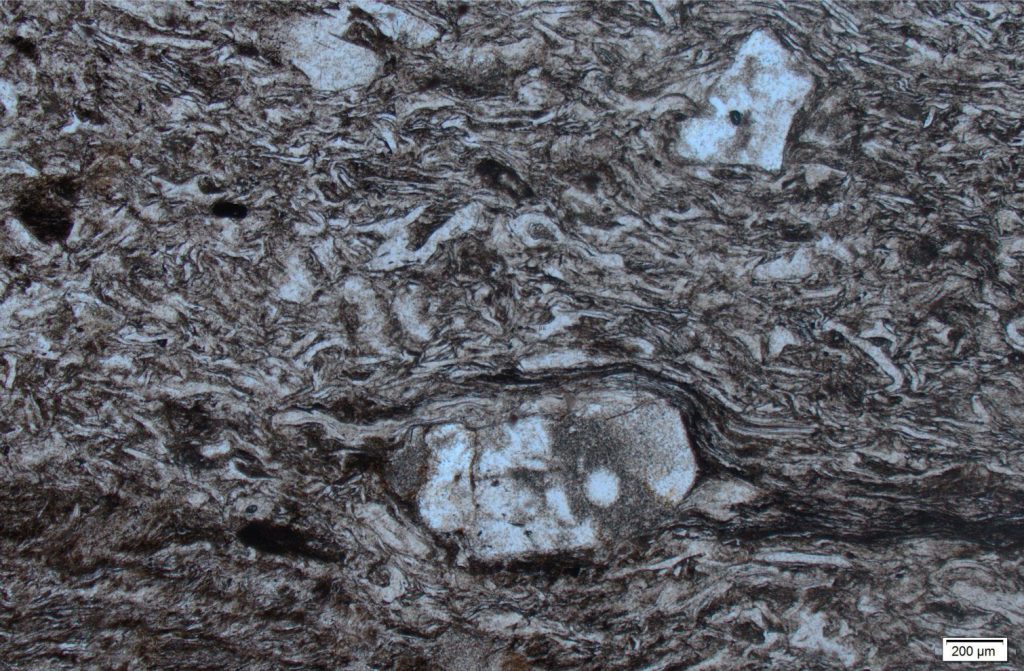
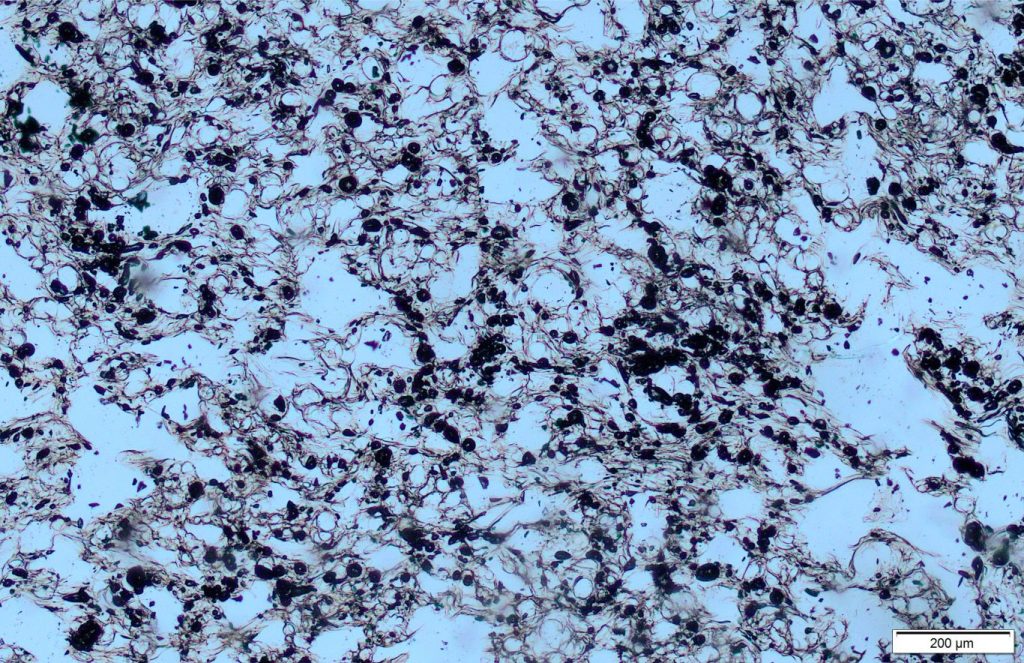
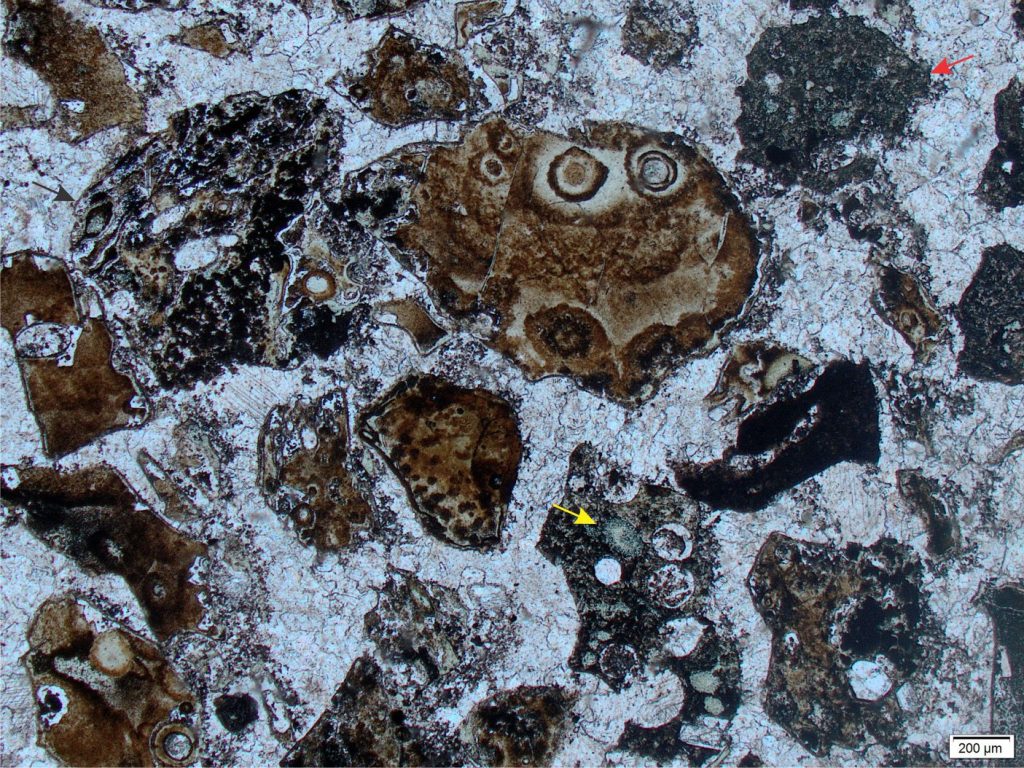
Acknowledgement
Many thanks to Kirsty Vincent, Earth Sciences, Waikato University for access to the petrographic microscope.
Related posts
Accretionary aggregates and accretionary lapilli
Ignimbrites in outcrop and thin section
Volcanics in outcrop: Pyroclastic density currents
Volcanics in outcrop: Secondary volcaniclastics
Volcanics in outcrop: Lava flows
Volcanics in outcrop: Pyroclastic fall deposits
Fluid flow: Froude and Reynolds numbers

















